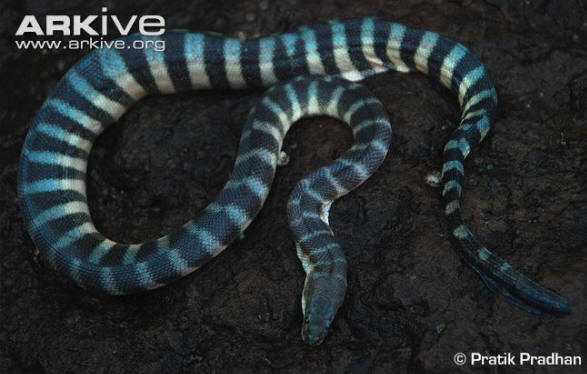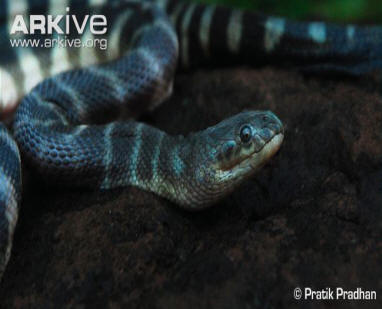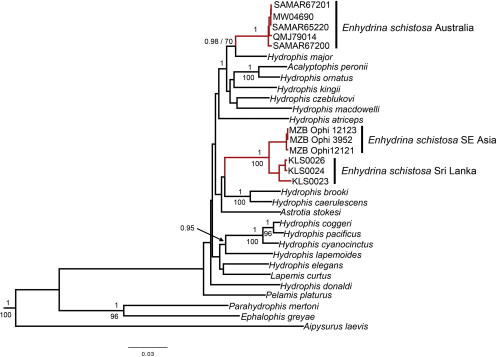Classification

Domain - Eukarya
Kingdom: Animalia
Phylum - Chordata
Class - Reptilia
Order - Squamata
Family - Hydrophiidae
Genus - Enhydrina
Species - E. schistosa
Common Name: Beaked Sea Snake
The snake received the common name Beaked sea snake because of
the downturned, beak-like projection on the snout at the front
of the jaw.

Domain: Eukarya
The beaked sea snake falls under this domain because the
organism possesses a complex cells with membrane bounded
organelles and also contains genetic material in the cell's
nucleus. (Examples: range from plants like
Sunflowers and animals like
Jellyfishes)
Kingdom: Animalia
This organism is part of the kingdom Animalia because it's
heterotrophic and lacks a cell wall. The organism also possesses
tissue. (Examples: are like your everyday animals such as
Honeybees and
Zebras)
Phylum: Chordata
The snake falls in this phylum because it possess: a dorsal
nerve chord, flexible notochord, pharyngeal gill slits, and an endostyle at some point in its life history. Organisms in
this phylum are also triploblast and have a endoskeleton.(
Examples: animals like
Gorillas and
Red tailed hawks)
Class: Reptilia
Formally known as reptiles, organisms in this class lay amniotic
eggs (that allowed them to lay eggs outside of water) and have
keratinized scales.( Examples: are the
American alligator and
Frilled Neck Lizard)
Order: Squamata
Reptiles, like the beaked sea snake, have skins with horny
scales or shields. They also possess powerful hinge jaws called
quadrate hinge. This jaw allows the organism to open their
mouth very wide to consume prey whole.(Examples: are lizards and
snakes, such as
Texas Horned Lizard and the
Paradise Tree snake)
Family: Hydrophiidae
Members of this family, are venomous snakes who live most of
their lives in marine environment. Most are so adapted to life
in water, that they are not able to survive or move on land.
Beaked sea snakes can be found outside of water, but never go to
far away from it.
Genus:
Enhydrina
Snakes from this genus are known for having extremely long
and narrowed mental scale that is concealed in a deep
notch between the lower jaws. Enhydrina translates to
"little water snake" in Greek.

This phylogenetic trees shows that Enhydrina schistosa is
actually two separate species. The two species seem similar due
to the fact they settled in the same environments. This is an
example of convergent evolution. Read more about
this recent discovery on the Facts page.

In this phylogentic tree the scientist used DNA extracted from the liver and muscle tissue. They sequenced a total of 5243 base pairs from three mitochondrial and four nuclear markers. The tree on the left shows that the two species were not monophyletic due to the findings in the DNA sequencing. But earlier in research it was thought that the two species were monophyletic with a common ancestor of the Asian taxa Hydrophis caerulescen. The analyses of the mtDNA strongly rejected the relationship and rejected the idea that both species were monophyletic. The tree below was a earlier tree that show that the two species from Asia and Australia were non- monophyltic.
Continue
to learn about the Habitat
of the sea snake.
Back to Home Page.
To Contact me go to my Contact Page.
